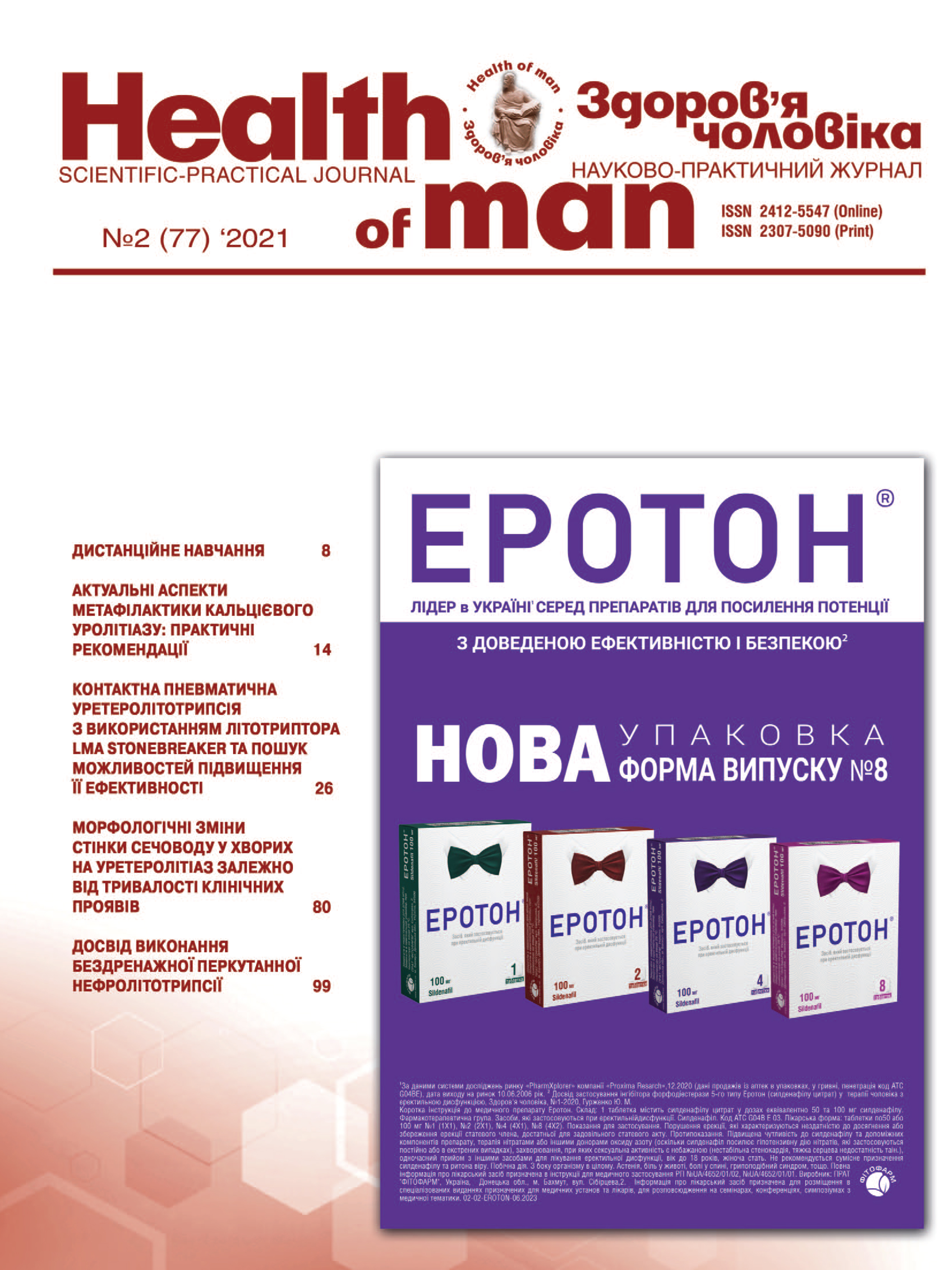Methods for Early Diagnostics of Pathological States of the Penital Cavernous Basin
##plugins.themes.bootstrap3.article.main##
Abstract
Erectile dysfunction (ED) is today considered one of the most common disorders in middle-aged and older men and one of the most pressing problems from both a medical and social point of view.
The objective: to compare the main methods for diagnosing pathological conditions of the cavernous basin of the penis, leading to the development of ED.
Materials and methods. The study involved 62 patients (main group) aged 38 to 55 years, who applied to the clinic «Avration», with a diagnosis of ED and the presence of cardiovascular pathology. The control group included 50 healthy men. The main methods of patient examination were dynamic cavernosography and ultrasound of the penile cavity system. Evaluation of men with ED included a thorough history and physical examination.
Results. The results of the study indicate that the prevalence of ED in persons without somatic pathology is 20.0 ± 8.9%, in the presence of concomitant cardiovascular diseases – 77.4 ± 5.3%. The data obtained during dynamic cavernosography make it possible to reliably classify the etiology of ED and propose methods for its treatment. Analysis of the respondents’ answers made it possible to assess their sexual life, clearly demonstrated the main problems characteristic of the sexual life of patients with ED.
Conclusion. The main pathologies of the cavernous basin of the penis leading to ED are pathological venous leakage (74.2 ± 7.8% of cases), pathological shunts between the glans penis and the corpora cavernosa (35.6 ± 8.6% of cases), sclerosis of the cavernous bodies of the penis (29.0 ± 8.1% of cases). Dynamic cavernosography is a method for diagnosing pathological conditions of the cavernous basin of the penis, leading to erectile dysfunction, which is more effective than the method of ultrasound diagnostics.
##plugins.themes.bootstrap3.article.details##

This work is licensed under a Creative Commons Attribution 4.0 International License.
Authors retain the copyright and grant the journal the first publication of original scientific articles under the Creative Commons Attribution 4.0 International License, which allows others to distribute work with acknowledgment of authorship and first publication in this journal.
References
Gorilovskij LM, Lakhno DA. Ehrektil’naya disfunkciya. Russkij medicinskij zhurnal. 2010; 13(10):40–1.
Rubin VV, Urvachev EE. Kurortnoe lechenie bol’nykh ehrektil’noj disfunkciej, obuslovlennoj metabolicheskim sindromom, s kompleksnym primeneniem lechebnykh faktorov Zheleznovodskogo kurorta. Citokiny i vospalenie. 2011;10(2):104–6.
Shvarc PG. Narusheniya polovoj funkcii pri rannikh klinicheskikh formakh sosudistykh zabolevanij golovnogo mozga. M.: GEHOTAR-Media; 2014. 235 c.
Khajbulina EHT, Kalinchenko SYU, Ermachek EA. Ehrektil’naya disfunkciya. Rol’ deficita polovykh gormonov u muzhchin v patogeneze i lechenii narushenij seksual’noj funkcii. Consilium medicum. 2014;6(7):500–2.
Khanzada U, Khan SA, Hussain M. et al. Evaluation of the Causes of Erectile Dysfunction in Patients Undergoing Penile Doppler Ultrasonography in Pakistan. Wld J. Mens Health. 2017;35(1):22–7.
Mutnuru PC, Ramanjaneyulu HK, Susarla R. et al. Pharmaco Penile Duplex Ultrasonography in the Evaluation of Erectile Dysfunction. J. Clin. Diagn. Res. 2017;11(1):7–10.
Yucel OB, Salabas E, ErmecB. The Case Report of Priapus and a Modern Approach to an Ancient Affliction. Sex Med. Rev. 2017;5(1):120–8.





